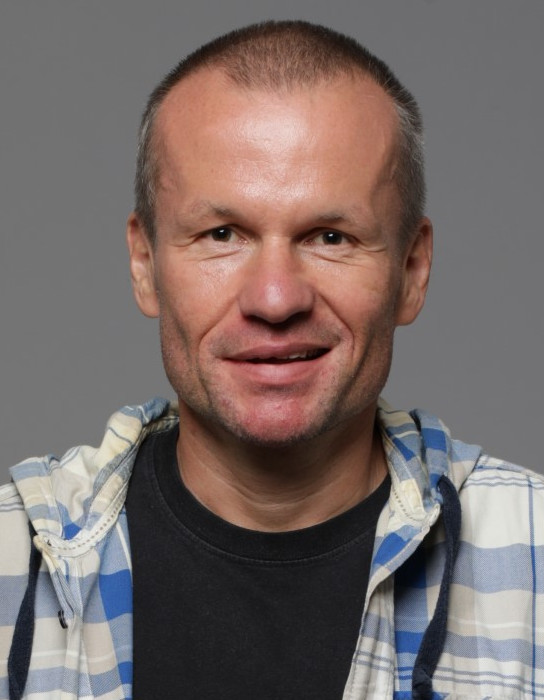3D Scanning
Data is displayed for academic year: 2023./2024.
Course Description
In this course students gain knowledge about 3D scanning.
The following topics are covered: Introduction to 3D scanning and profilometry. Image formation model. Perspective projection. Decomposition of the perspective projection matrix. Intrinsic and extrinsic parameters. Binocular vision. Stereo camera pair. Epipolar constraint. Stereo rectification. Fundamental matrix. Triangulation and 3D reconstruction. Correspondence problem. Keypoints. RANSAC. Homographies. Single camera calibration. Calibration of a stereo camera pair. Autocalibration. Three views. Trifocal tensor. Geometries with more than three views. Bundle adjustment. Cheirality. Structured light. Classification of structured light patterns. One-shot and multiple-shot patterns. Light sources and projectors. Fringe projection profilometry. Phase unwrapping. Projector calibration. Systems using multiple cameras and projectors. Time-of-flight cameras. Coding functions. Point clouds. Registration. ICP algorithm. Laser 3D scanning. Handheld 3D scanners.
The following topics are covered: Introduction to 3D scanning and profilometry. Image formation model. Perspective projection. Decomposition of the perspective projection matrix. Intrinsic and extrinsic parameters. Binocular vision. Stereo camera pair. Epipolar constraint. Stereo rectification. Fundamental matrix. Triangulation and 3D reconstruction. Correspondence problem. Keypoints. RANSAC. Homographies. Single camera calibration. Calibration of a stereo camera pair. Autocalibration. Three views. Trifocal tensor. Geometries with more than three views. Bundle adjustment. Cheirality. Structured light. Classification of structured light patterns. One-shot and multiple-shot patterns. Light sources and projectors. Fringe projection profilometry. Phase unwrapping. Projector calibration. Systems using multiple cameras and projectors. Time-of-flight cameras. Coding functions. Point clouds. Registration. ICP algorithm. Laser 3D scanning. Handheld 3D scanners.
Study Programmes
University graduate
[FER3-HR] Audio Technologies and Electroacoustics - profile
Elective Courses
(1. semester)
(3. semester)
[FER3-HR] Communication and Space Technologies - profile
Elective Courses
(1. semester)
(3. semester)
[FER3-HR] Computational Modelling in Engineering - profile
Elective Courses
(1. semester)
(3. semester)
[FER3-HR] Computer Engineering - profile
Elective Courses
(1. semester)
(3. semester)
[FER3-HR] Computer Science - profile
Elective Courses
(1. semester)
(3. semester)
[FER3-HR] Control Systems and Robotics - profile
Elective Courses
(1. semester)
(3. semester)
[FER3-HR] Data Science - profile
Elective Courses
(1. semester)
(3. semester)
[FER3-HR] Electrical Power Engineering - profile
Elective Courses
(1. semester)
(3. semester)
[FER3-HR] Electric Machines, Drives and Automation - profile
Elective Courses
(1. semester)
(3. semester)
[FER3-HR] Electronic and Computer Engineering - profile
Elective Courses
(1. semester)
(3. semester)
Elective Courses of the Profile
(1. semester)
(3. semester)
[FER3-HR] Electronics - profile
Elective Courses
(1. semester)
(3. semester)
[FER3-HR] Information and Communication Engineering - profile
Elective Courses
(1. semester)
(3. semester)
Elective Courses of the Profile
(1. semester)
Elective Coursesof the Profile
(3. semester)
[FER3-HR] Network Science - profile
Elective Courses
(1. semester)
(3. semester)
[FER3-HR] Software Engineering and Information Systems - profile
Elective Courses
(1. semester)
(3. semester)
Learning Outcomes
- list technologies which are used in 3D scanning
- compare 3D scanning technologies and select the best one depending on the application
- analyze accuracy and uncertainty of 3D reconstruction
Forms of Teaching
Lectures
Lectures present theoretical concepts.
Seminars and workshopsSeminar includes discussion on theoretical concepts presented during lectures.
LaboratoryLaboratory exercises facilitate better understanding of the problems of 3D scanning.
Grading Method
| Continuous Assessment | Exam | |||||
|---|---|---|---|---|---|---|
| Type | Threshold | Percent of Grade | Threshold | Percent of Grade | ||
| Laboratory Exercises | 50 % | 15 % | 50 % | 15 % | ||
| Seminar/Project | 50 % | 15 % | 50 % | 15 % | ||
| Mid Term Exam: Written | 0 % | 35 % | 0 % | |||
| Final Exam: Written | 0 % | 35 % | ||||
| Exam: Written | 50 % | 70 % | ||||
Comment:
The mandatory prerequisites for the passing grade are at least 50% points achieved on the midterm and on the final exam combined, and at least 50% on the laboratory and on the seminar.
Week by Week Schedule
- Introduction to 3D scanning and profilometry. Image formation model.
- Perspective projection. Decomposition of the perspective projection matrix. Intrinsic and extrinsic parameters.
- Binocular vision. Stereo camera pair. Epipolar constraint. Stereo rectification. Fundamental matrix.
- Triangulation and 3D reconstruction. Correspondence problem. Keypoints. RANSAC. Homographies.
- Single camera calibration. Calibration of a stereo camera pair. Autocalibration.
- Three views. Trifocal tensor. Geometries with more than three views.
- Bundle adjustment. Cheirality.
- Midterm exam
- Structured light. Classification of structured light patterns. One-shot and multiple-shot patterns. Light sources and projectors.
- Fringe projection profilometry. Phase unwrapping.
- Projector calibration. Systems using multiple cameras and projectors.
- Time-of-flight cameras. Coding functions.
- Point clouds. Registration. ICP algorithm.
- Laser 3D scanning. Handheld 3D scanners. Other 3D scanning methods.
- Final exam
Literature
For students
General
ID 222434
Winter semester
5 ECTS
L0 English Level
L1 e-Learning
30 Lectures
5 Seminar
0 Exercises
15 Laboratory exercises
0 Project laboratory
0 Physical education excercises
Grading System
87 Excellent
75 Very Good
64 Good
51 Sufficient


 Pristupačnost
Pristupačnost
